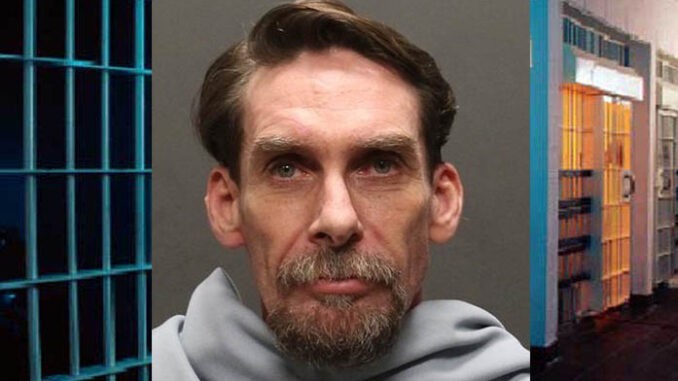
It took nearly three years and three months, but Roger Delane Wilson is finally where he wants to be – sitting at the defense table inside a Cochise County courtroom where a jury will decide whether he acted in self-defense during a June 2017 fatal shooting.
 Wilson is charged with first-degree premeditated murder stemming from the shooting of Jose “JD” Arvizu around 1 a.m. June 22, 2017. He has continually claimed he fired in self-defense after Arvizu appeared on the roadway outside the home of Wilson’s mother a short time after the two men argued at a nearby residence.
Wilson is charged with first-degree premeditated murder stemming from the shooting of Jose “JD” Arvizu around 1 a.m. June 22, 2017. He has continually claimed he fired in self-defense after Arvizu appeared on the roadway outside the home of Wilson’s mother a short time after the two men argued at a nearby residence.
The trial which started Sept. 15 with jury selection will resume Tuesday and is expected to last another two weeks. There has been no announcement as to whether Wilson, 52, will testify.
A number of strict COVID-19 protocols are in place within the courtroom, including social-distancing among the jurors and court staff. The Arizona Daily Independent has learned there is also a strict security measure in place when Wilson is in the courtroom, as he is required to wear a shock-control device on his legs underneath his clothing.
Judge Timothy Dickerson took over the case in April after the court’s presiding judge, James Conlogue, recused himself following some type of undisclosed threat reportedly made by Wilson, who has remained in jail since the shooting. Wilson frequently blamed Conlogue for not dismissing the charges based on the self-defense claim.
Wilson also engaged in multiple outbursts in Conlogue’s court and has admitted punching one of his eight court-appointed attorneys during a jail visit due to a disagreement. He has also been investigated by various law enforcement agencies for verbal threats against some of his other attorneys.
However, during the first four days of the trial, Wilson had only one short verbal flare-up with the judge and it occurred outside the presence of the jury.
After closing arguments, two of the 14 empaneled jurors will be excused while the others begin deliberations. The main question is whether Wilson acted in self-defense, and if not, whether the state has proved beyond a reasonable doubt that Arvizu’s death was first-degree murder, second-degree murder, or manslaughter.
The difference between the murder charges is the issue of premeditation, which Dickerson will instruct the jurors requires proof of three things – that Wilson caused Arvizu’s death, that Wilson intended or knew he would cause the death, and he acted with premeditation by “reflecting” on his decision to act regardless of how long that reflection lasted.
Premeditation is not proven if the jury determines the shooting was “the instant effect of a sudden quarrel or heat of passion.”
Dickerson will also give an instruction for second-degree murder. It requires the jurors to find Wilson either “intentionally caused” Arvizu’s death, that Wilson knew his conduct would cause death or serious physical injury, or that Wilson showed extreme indifference by recklessly engaging in conduct which “created a grave risk of death” that deviated from what a reasonable person would have done.
Manslaughter will be a third option for jurors if they don’t believe Wilson acted in self-defense nor that he murdered Arvizu. There are two alternate means of manslaughter, one which requires proof Wilson “recklessly caused the death of another person” while the other would require proof Wilson “consciously” disregarded a grave risk of death and acted upon a sudden quarrel or heat of passion.
The first evidence presented to jurors prosecutor Lori Zucco’s opening statement was the 911 call from a woman inside the house Arvizu went to after being shot. The woman told the dispatcher she and Arvizu were the only people inside the home, but deputies from the Cochise County Sheriff’s Office later found a man, Eric Lynn, hiding under a bed.
According to the testimony of several sheriff’s deputies, Lynn provided details about where the shooting occurred even though he denied being present at the time. Forensic evidence showed Arvizu walked about 500 feet after being shot, ending up at his friend’s house but leaving a trail of blood along the roadway.
Emergency responders transported Arvizu to the helipad at Canyon Vista Medical Center for transfer to a trauma hospital in Tucson. However, his medical condition worsened so Arvizu had to be admitted to the CVMC emergency room. He died there despite three hours of medical intervention, according to the testimony of the ER doctor who treated him.
Nearly 50 names are on the potential witness list, although Zucco and defense attorney Chris Kimminau have indicated several may not be called to testified.

